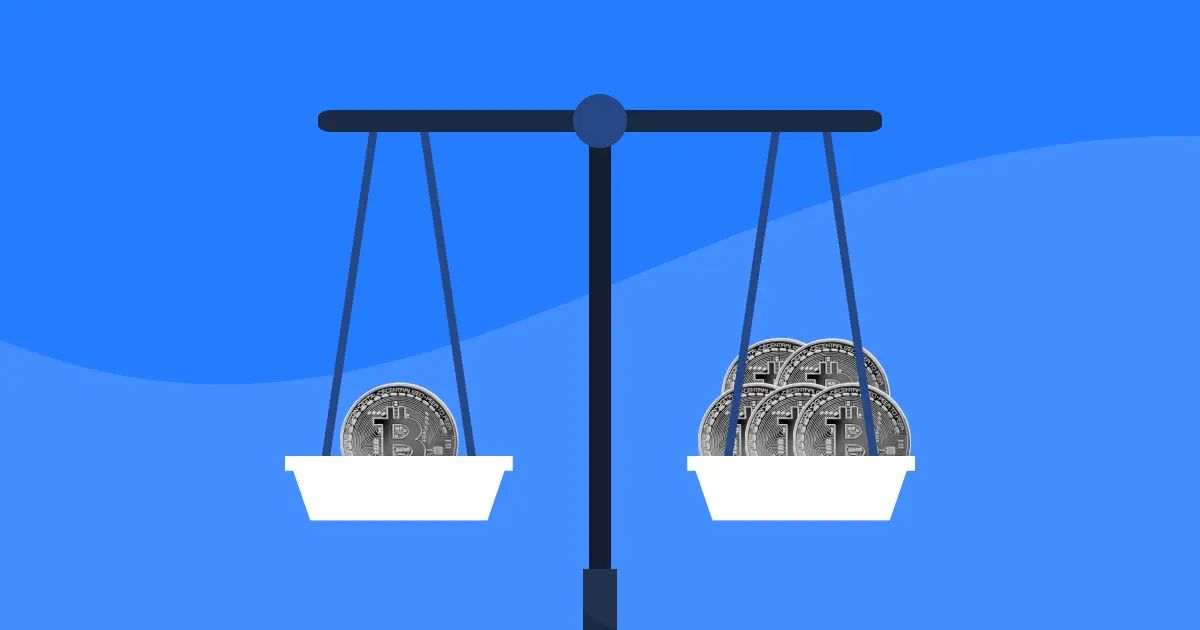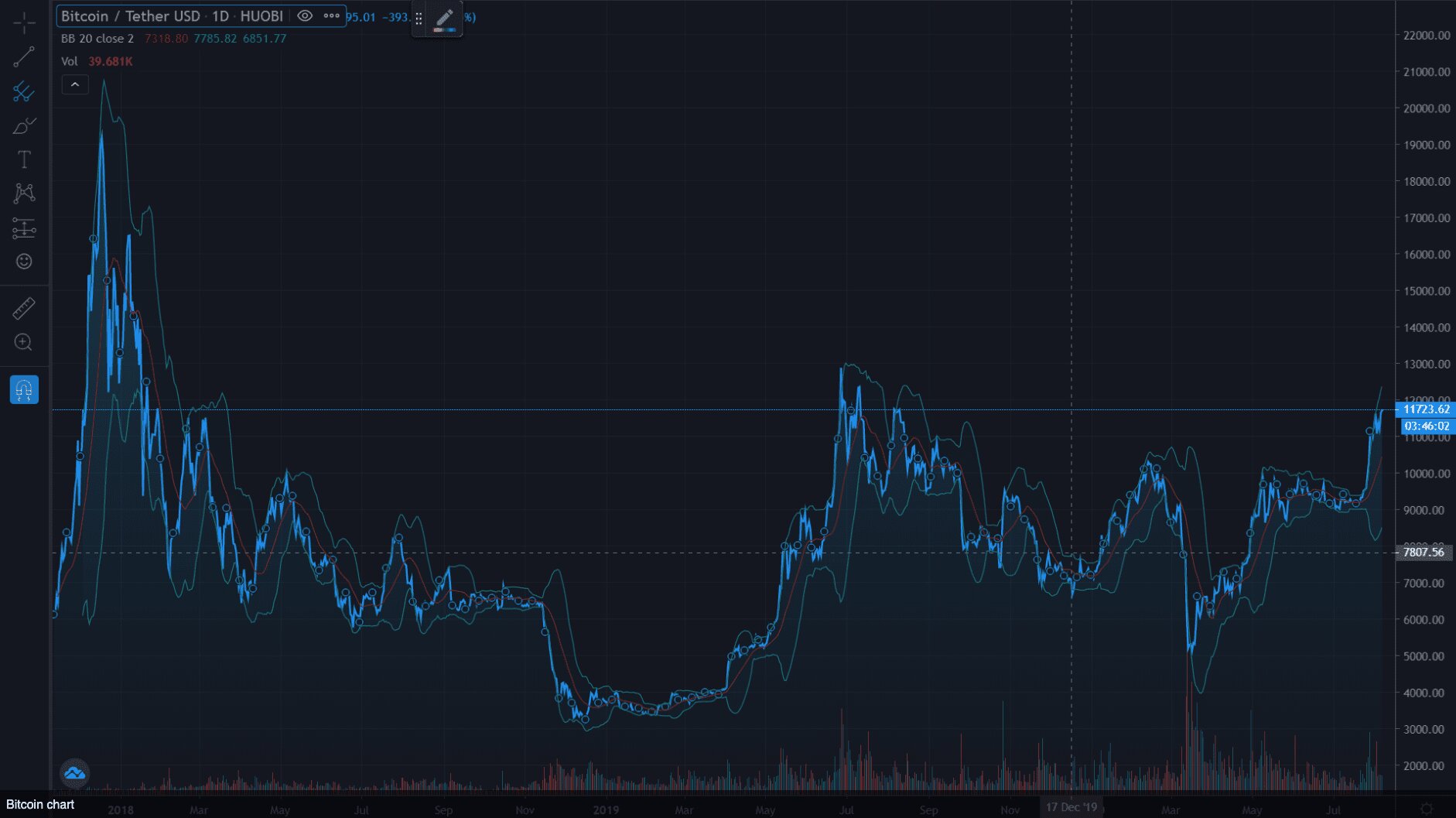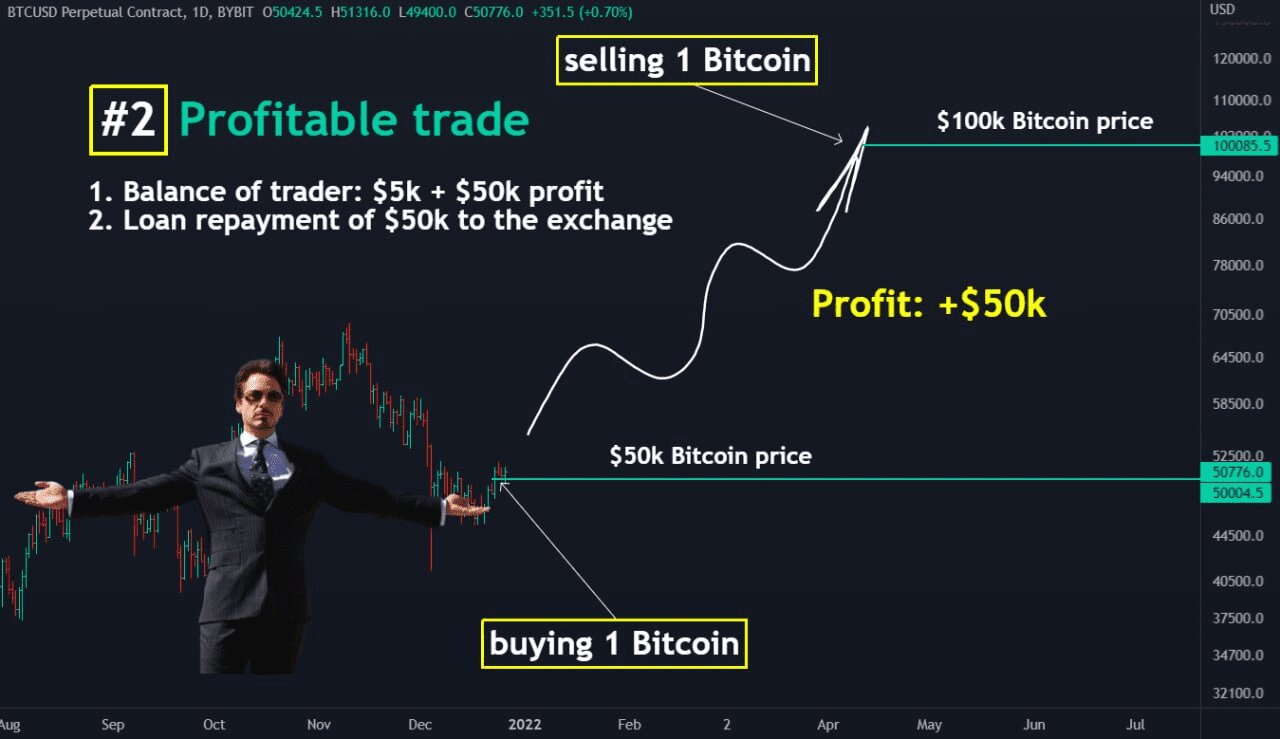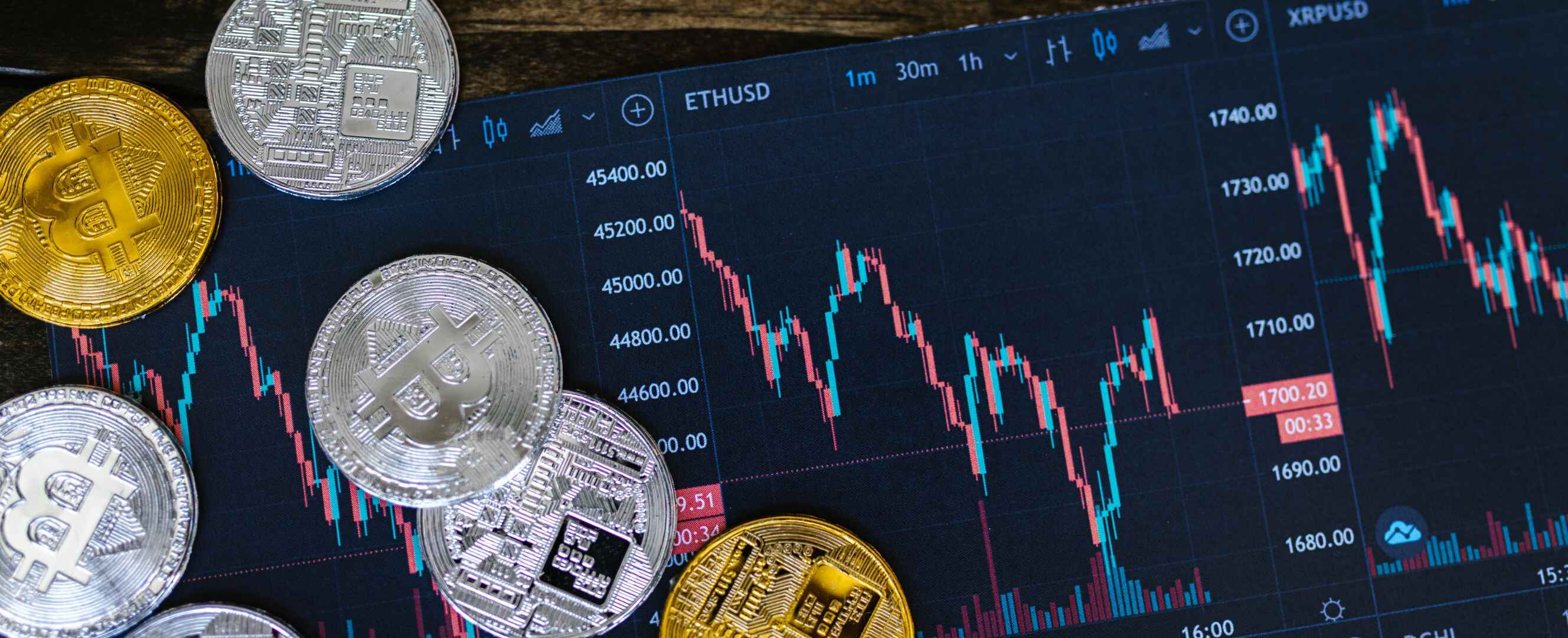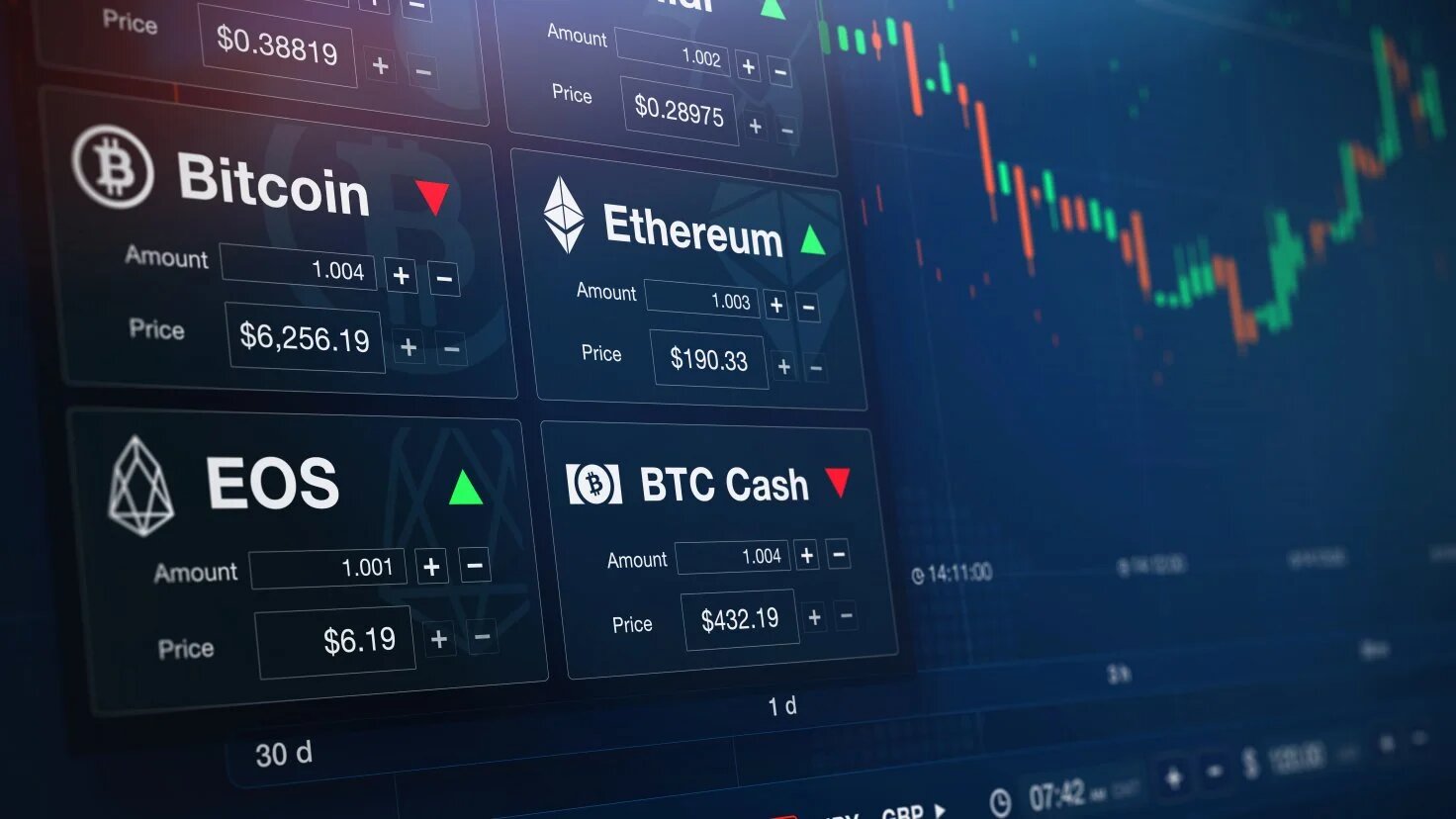Introduction
Welcome to the exciting world of crypto margin trading! With the rise of cryptocurrencies and the increasing popularity of trading, margin trading has emerged as a powerful tool for experienced traders to maximize their profits. In this article, we will explore the concept of margin trading, how it works, the benefits and risks involved, different types of margin trading, popular crypto margin trading platforms, and some tips for success. Whether you’re a seasoned trader or new to the crypto market, understanding margin trading is essential to make the most of your trading strategies.
Margin trading is a practice that allows traders to borrow funds from a broker or exchange to leverage their trading positions. It essentially magnifies the trader’s buying power by borrowing funds to trade more than the available balance in their account. This enables them to take larger positions and potentially amplify their profits. However, it is important to note that margin trading also increases the potential losses.
Margin trading works by using collateral to secure the borrowed funds. The collateral can be the trader’s existing assets, such as cryptocurrencies or fiat currency, which is held by the broker or exchange. The amount of leverage provided depends on the margin requirements set by the platform. The leverage ratio determines the size of the position a trader can take relative to their account balance. For example, a leverage ratio of 10:1 means that for every $1 of the trader’s own capital, they can trade with $10.
There are several benefits to margin trading. Firstly, it allows traders to potentially generate higher returns by leveraging their capital. With the ability to take larger positions, traders can make larger profits if their trades are successful. Additionally, margin trading provides liquidity, as traders can enter and exit positions quickly without needing to have the full amount of funds available in their account. This flexibility can be advantageous in fast-paced and volatile markets.
However, it is important to approach margin trading with caution, as it also carries significant risks. The main risk of margin trading is the potential for losses to exceed the initial investment. If the market moves against the trader’s position, the borrowed funds can magnify the losses, leading to the liquidation of their position and significant financial loss. It is crucial for traders to have a solid risk management strategy in place and only trade with funds they can afford to lose.
What is Margin Trading
Margin trading is a trading strategy that allows traders to borrow funds to trade larger positions than their account balance would normally allow. It involves using leverage, which is the ratio of borrowed funds to the trader’s own capital. By using leverage, traders can potentially amplify their profits, but it also increases the potential for losses.
When engaging in margin trading, traders need to provide collateral to secure the borrowed funds. This collateral can be in the form of cryptocurrencies or fiat currency held by the broker or exchange. The amount of collateral required depends on the margin requirements set by the platform. Generally, the higher the leverage ratio, the lower the required collateral.
The leverage ratio determines the amount of trading power that a trader has. For example, with a leverage ratio of 10:1, a trader can trade with ten times the amount of their own capital. This means that if a trader has $1,000 in their account, they can open a position worth $10,000.
Margin trading offers several advantages to traders. Firstly, it allows them to take advantage of market movements and potentially generate higher returns. By trading larger positions, traders can magnify their profits when their trades are successful. This can be especially valuable in volatile markets where there are significant price fluctuations.
Another benefit of margin trading is the ability to diversify trading strategies. With more trading power, traders can enter multiple positions in different markets simultaneously. This diversification can spread the risk and potentially increase the chances of profitable trades.
However, margin trading also carries risks. One of the primary risks is the potential for losses to exceed the trader’s initial investment. When a trade goes against the trader’s position, the borrowed funds can amplify the losses, leading to negative account balances and potential liquidation of their positions.
It is essential for traders to have a solid risk management plan in place when engaging in margin trading. This includes setting stop-loss orders to limit potential losses and sticking to a predetermined risk-reward ratio for their trades. Additionally, it is crucial to have a thorough understanding of the market and to conduct proper research before entering any trades.
Overall, margin trading can be a powerful strategy for experienced traders looking to maximize their trading opportunities. However, it is essential to approach it with caution, as the potential for losses is also magnified. By understanding the risks involved and implementing a robust risk management plan, traders can navigate the world of margin trading effectively.
How Does Margin Trading Work
Margin trading works by allowing traders to borrow funds from a broker or exchange to increase their trading positions. This provides traders with the ability to trade larger amounts than their account balance would normally allow. Here’s a step-by-step breakdown of how margin trading works:
- Opening a margin account: To start margin trading, traders need to open a margin account with a broker or exchange that supports margin trading. They often need to provide additional documents and meet certain eligibility requirements.
- Collateral: In margin trading, traders need to provide collateral to secure the borrowed funds. This collateral can be in the form of cryptocurrencies or fiat currency. The amount of collateral required depends on the margin requirements set by the platform.
- Leverage ratio: The leverage ratio determines how much trading power a trader has. It represents the ratio of borrowed funds to the trader’s own capital. For example, a leverage ratio of 5:1 means that for every $1 of the trader’s own capital, they can trade with $5.
- Placing trades: Once the margin account is set up and collateral is provided, traders can start placing trades. They can borrow funds from the platform to open larger positions than their account balance would normally allow.
- Margin call and liquidation: If the value of the trader’s positions starts declining and the account’s equity falls below a certain threshold (known as the maintenance margin), a margin call is triggered. At this point, traders may need to add more funds to their account or close some positions to increase the account’s equity. If the account’s equity continues to fall and reaches the liquidation level, the broker or exchange may liquidate the trader’s positions to recover the borrowed funds.
- Account settlement: After closing positions or adding more funds to the account, the trader’s account balance is adjusted accordingly. Any profits or losses from the trades are reflected in the account balance.
It’s important to note that margin trading amplifies both profits and losses. While it offers the potential for higher returns, it also carries higher risks. Traders need to exercise caution and have a solid understanding of the risks involved. Implementing risk management strategies such as setting stop-loss orders and properly diversifying one’s portfolio are crucial in mitigating potential losses.
Furthermore, different exchanges and platforms may have varying margin requirements and rules for margin trading. It’s essential for traders to thoroughly read and understand the terms and conditions specific to the platform they’re using before engaging in margin trading.
Overall, margin trading provides traders with the opportunity to leverage their trading positions and potentially maximize their profits. However, it requires a careful approach, thorough research, and proper risk management to navigate the complexities and mitigate potential risks.
Benefits of Margin Trading
Margin trading offers several benefits to experienced traders who are looking to maximize their trading opportunities and potential profits. Here are some key advantages of margin trading:
- Leverage: One of the main benefits of margin trading is the ability to leverage one’s trading positions. By borrowing funds from a broker or exchange, traders can trade larger positions than their account balance would normally allow. This amplifies the potential returns, allowing traders to generate higher profits if their trades are successful.
- Increased buying power: With margin trading, traders can access larger amounts of trading capital without needing to deposit the full amount themselves. This increased buying power allows traders to take advantage of market opportunities that may require larger positions to reap significant profits.
- Liquidity: Margin trading provides liquidity, as traders can enter and exit positions quickly without needing to have the full amount of funds available in their account. This flexibility is particularly beneficial in fast-paced and volatile markets where timing is crucial.
- Diversification: By leveraging their capital, traders can diversify their portfolio and engage in multiple trading positions simultaneously. This diversification can spread the risk and potentially increase the chances of profitable trades. Traders can explore different markets and instruments, thereby expanding their trading opportunities.
- Access to short selling: Margin trading allows traders to engage in short selling, which is the practice of selling an asset that one does not already own with the expectation of buying it back at a lower price in the future. This strategy enables traders to profit from falling markets and adds another layer of opportunity in a bearish market environment.
It is important to note that while margin trading offers significant benefits, it also comes with risks. The leverage provided can amplify losses as well as profits, and traders need to be aware of potential liquidation risks if the market moves against their positions.
To make the most of the benefits of margin trading, traders should have a solid understanding of market dynamics, conduct thorough research, and develop a robust risk management strategy. Implementing risk management tools such as stop-loss orders and setting realistic profit targets can help control potential losses and protect capital.
Overall, margin trading can be an advantageous tool for experienced traders looking to enhance their trading strategies and potentially maximize profits. By carefully navigating the risks and utilizing the benefits, traders can leverage their capital effectively and explore a wider range of trading opportunities.
Risks of Margin Trading
While margin trading offers the potential for higher profits, it also carries significant risks. It is crucial for traders to be aware of these risks and approach margin trading with caution. Here are some of the key risks associated with margin trading:
- Margin Call and Liquidation: One of the primary risks of margin trading is the potential for a margin call and subsequent liquidation of positions. If the value of a trader’s positions declines and the account’s equity falls below a certain threshold (known as the maintenance margin), a margin call is triggered. If the trader fails to add more funds to the account or close positions to increase the account’s equity, the broker or exchange may proceed to liquidate their positions, potentially incurring significant losses.
- Amplified Losses: Margin trading magnifies both profits and losses. While leverage can amplify potential gains, it can also amplify losses if the market moves against the trader’s positions. This means that even a small adverse price movement can lead to sizable losses, potentially exceeding the initial investment.
- Market Volatility: Margin trading is more susceptible to market volatility due to the amplified positions. Rapid and significant price fluctuations can have a substantial impact on the margin account. Sudden market shifts can result in unexpected losses or liquidation of positions if the market moves rapidly and triggers a margin call.
- Interest and Fees: Borrowing funds for margin trading often incurs interest charges and fees. These costs can reduce the overall profit margin and may significantly impact the trader’s returns. It is essential for traders to understand the interest rates and fees associated with margin trading and factor them into their trading strategies.
- Psychological Stress: Margin trading can induce significant psychological stress due to the increased financial risk involved. Traders may experience heightened emotions and anxiety when their positions are in the negative territory or when facing potential margin calls. It requires discipline and emotional stability to manage the pressures associated with margin trading effectively.
To mitigate the risks of margin trading, it is crucial for traders to implement robust risk management strategies. This includes setting strict stop-loss orders to limit potential losses, diversifying the portfolio across different assets, and using leverage responsibly. Furthermore, traders should only invest funds they can afford to lose and avoid overextending their positions or taking excessive risks.
It is also essential for traders to stay informed about market conditions, conduct thorough research, and have a deep understanding of the assets they are trading. Maintaining a disciplined trading approach and following a well-defined trading plan can help manage risks and increase the chances of successful margin trading.
Overall, margin trading can be a powerful tool for experienced traders, but it is important to acknowledge the risks involved. By being aware of and proactively managing these risks, traders can navigate the world of margin trading with greater confidence and maximize their potential for successful trading outcomes.
Different Types of Margin Trading
Margin trading encompasses various types and strategies that traders can employ to leverage their positions and potentially maximize their profits. Here are some of the different types of margin trading:
- Margin Buy: This is the most common type of margin trading, where traders borrow funds to buy more of an asset than their account balance would allow. By using leverage, traders can amplify their buying power and potentially generate higher returns if the price of the asset increases.
- Margin Sell (Short Selling): In this type of margin trading, traders borrow an asset and sell it with the expectation that its price will fall. If the price does drop as anticipated, the trader can buy back the asset at a lower price, return it to the lender, and keep the difference as profit. Short selling allows traders to profit from falling markets and adds a layer of opportunity in bearish market conditions.
- Perpetual Contracts/Inverse Futures: Perpetual contracts, also known as inverse futures, are derivative products that enable traders to go long or short on an asset without an expiration date. These contracts are settled periodically, typically every few hours, and the prices are closely tied to the underlying asset. Traders can use leverage to open larger positions and potentially increase their profits.
- Margin Lending: Margin lending involves providing funds to other traders who want to margin trade in exchange for interest payments. As a lender, individuals can earn passive income by lending their cryptocurrencies or fiat currency to traders seeking leverage. This type of margin trading allows individuals to benefit from the interest earned on the loans.
- Options Trading: Options trading involves the buying or selling of options contracts, which give the trader the right, but not the obligation, to buy or sell an asset at a predetermined price within a specified time period. Traders can use leverage to enter options positions, potentially amplifying their returns with smaller upfront capital.
Each type of margin trading has its own set of risks and considerations. Traders should thoroughly understand the mechanics and unique characteristics of the specific type they wish to engage in before participating in margin trading.
Moreover, different platforms and exchanges may offer varying options for margin trading. Traders should research and choose a reputable platform that aligns with their trading goals and offers the desired type of margin trading.
It is important for traders to educate themselves about the intricacies of each type of margin trading and consider their risk tolerance and trading strategies before diving into these markets. Implementing proper risk management measures and staying informed about market conditions can contribute to successful margin trading outcomes.
Overall, understanding the different types of margin trading allows traders to explore various strategies and take advantage of the potential profit opportunities offered by each method. However, it is crucial to approach margin trading with a solid understanding of the associated risks and to implement appropriate risk management strategies.
Popular Crypto Margin Trading Platforms
The growing popularity of margin trading in the cryptocurrency market has led to the emergence of several platforms that cater specifically to traders looking to leverage their positions. Here are some of the popular crypto margin trading platforms:
- BitMEX: BitMEX (Bitcoin Mercantile Exchange) is one of the most well-known and widely used margin trading platforms. It offers leverage of up to 100x on Bitcoin and other cryptocurrencies. BitMEX has a user-friendly interface, advanced trading features, and a variety of order types to suit different trading strategies.
- Bybit: Bybit is another prominent margin trading platform that focuses on perpetual contracts. It provides leverage of up to 100x on Bitcoin, Ethereum, and other cryptocurrencies. Bybit offers a user-friendly interface, advanced trading tools, and a range of order types that cater to both beginner and experienced traders.
- Binance Futures: Binance, one of the largest cryptocurrency exchanges, provides a margin trading platform called Binance Futures. It offers leverage of up to 125x on various cryptocurrencies. Binance Futures provides a seamless trading experience, a wide range of trading pairs, and competitive fees for margin trading enthusiasts.
- Kraken: Kraken is a reputable cryptocurrency exchange that offers margin trading for a selection of cryptocurrencies. With leverage of up to 5x, Kraken provides a secure and regulated platform for traders. It offers advanced trading features, robust security measures, and a user-friendly interface.
- OKEx: OKEx is a popular crypto exchange that offers a dedicated margin trading platform known as OKEx Margin Trading. It provides leverage of up to 100x on a wide range of cryptocurrencies. OKEx offers advanced trading tools, a high level of liquidity, and various order types to suit different trading strategies.
These are just a few examples of popular margin trading platforms in the crypto market. It is important for traders to conduct their own research and choose a platform that aligns with their trading goals, preferences, and level of experience. Factors to consider when choosing a platform include security measures, available trading pairs, leverage options, fees, user interface, and customer support.
It’s worth noting that margin trading is a complex activity that requires proper understanding and risk management. Traders should familiarize themselves with the specific rules, features, and risks associated with each platform before engaging in margin trading.
It is advisable to start with a small amount of capital and gradually increase exposure as one becomes more comfortable with the platform and the margin trading process. Traders should also regularly monitor their trades, adhere to their risk management strategies, and stay informed about market conditions to make informed trading decisions.
Overall, with the availability of various crypto margin trading platforms, traders have the flexibility to choose a platform that best suits their individual trading needs and strategies. However, proper due diligence is essential to select a reputable and reliable platform that prioritizes security and offers the necessary features and tools for successful margin trading.
Tips for Successful Crypto Margin Trading
Crypto margin trading can be a lucrative endeavor, but it also carries significant risks. To increase your chances of success and mitigate potential losses, here are some essential tips for margin trading in the cryptocurrency market:
- Understand the Risks: Margin trading involves a higher level of risk compared to regular spot trading. Educate yourself about the risks associated with leverage, margin calls, liquidations, and market volatility. Only trade with funds you can afford to lose.
- Have a Solid Trading Plan: Develop a well-defined trading plan, including entry and exit points, risk management strategies, and profit targets. Stick to your plan and avoid making impulsive and emotionally driven trading decisions.
- Start with a Small Position Size: When starting out, it is advisable to trade with a small position size to minimize potential losses and gain experience. Gradually increase your position size as you become more comfortable and confident with your trading strategy.
- Use Stop-Loss Orders: Implement stop-loss orders to limit potential losses. Set stop-loss levels based on your risk tolerance and technical analysis that aligns with your trading plan. Regularly monitor your trades and adjust stop-loss orders accordingly.
- Manage Risk Properly: Use proper risk management techniques such as position sizing, diversification, and risk-reward ratios. Avoid risking a significant portion of your capital on individual trades and consider the overall risk exposure of your margin trading portfolio.
- Stay Informed: Keep up-to-date with market news, events, and technical analysis. Stay informed about the projects and cryptocurrencies you are trading to make informed decisions. Utilize reputable sources of information and consider joining cryptocurrency communities to stay connected with the latest trends.
- Practice Risk-Free Trading: Consider using demo accounts or paper trading to practice your margin trading strategies without risking real funds. This allows you to gain experience, test different strategies, and refine your trading plan before investing real money.
- Regularly Review and Evaluate: Continuously evaluate your trading performance, identify strengths, and learn from your mistakes. Keep a trading journal to record your trades, analyze your decisions, and assess your overall trading strategy. Make adjustments based on your observations to optimize your trading approach.
- Choose a Reliable Trading Platform: Select a reputable and reliable crypto margin trading platform that offers competitive fees, robust security measures, a user-friendly interface, and a wide range of trading pairs. Ensure the platform has a strong track record and positive user feedback.
- Manage Emotions: Emotions can have a significant impact on trading decisions. Try to maintain emotional discipline, avoid making impulsive trades based on fear or greed, and stick to your predetermined trading plan. Avoid overtrading and take breaks when necessary.
Remember that margin trading requires careful consideration, continuous learning, and disciplined execution. It is essential to stay disciplined, control your emotions, and always prioritize risk management. With a well-thought-out strategy and consistent adherence to these tips, you can improve your chances of success in the challenging world of crypto margin trading.
Conclusion
Crypto margin trading can be a powerful tool for experienced traders looking to amplify their profits in the cryptocurrency market. It allows traders to leverage their positions and access larger trading volumes than their account balance would normally allow. However, it is crucial to recognize that margin trading also comes with significant risks.
Understanding the mechanics of margin trading, implementing proper risk management strategies, and conducting thorough research are key to success in this field. Traders should familiarize themselves with the different types of margin trading, popular platforms, and best practices for maximizing their trading opportunities.
By having a solid trading plan, utilizing stop-loss orders, practicing proper risk management, and continuously learning and adapting, traders can improve their chances of success in margin trading. It is essential to start with a small position size and gradually increase exposure as one becomes more experienced and comfortable with the risks involved.
Choosing a reputable and reliable margin trading platform that provides competitive fees, advanced trading features, and a user-friendly interface is also crucial. Traders should carefully evaluate platforms, considering factors like security, available trading pairs, leverage options, and customer support before making their decision.
Margin trading can be an exciting and potentially rewarding endeavor, but it should always be approached with caution. Traders must be aware of the risks involved, stay informed about market conditions, and be prepared for potential losses. Remember, the key to successful margin trading lies in thorough research, disciplined execution, and a strong risk management strategy.







